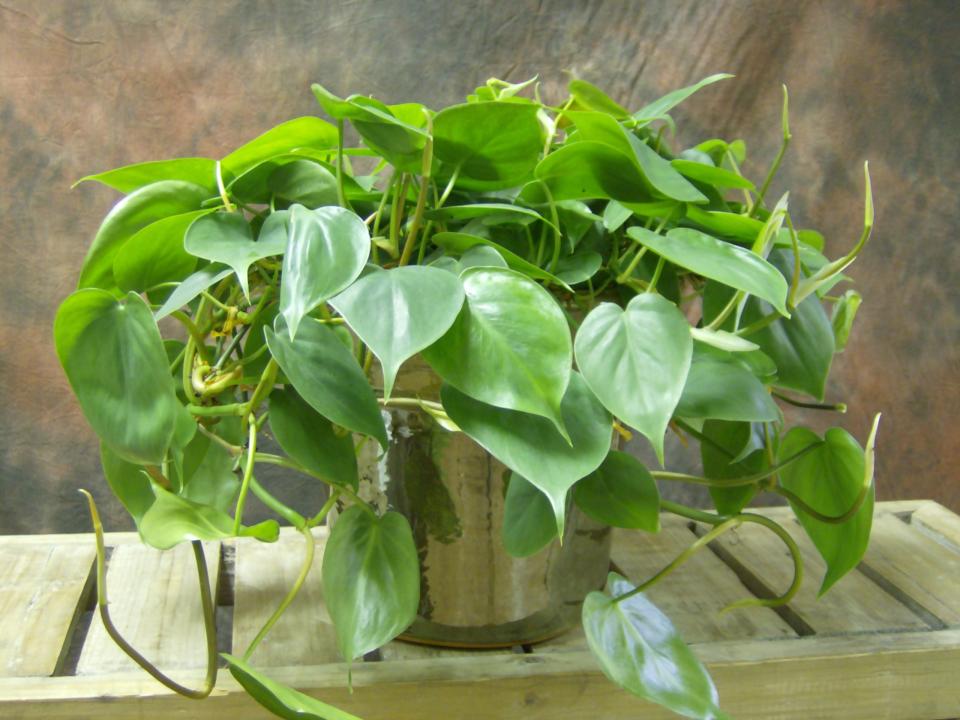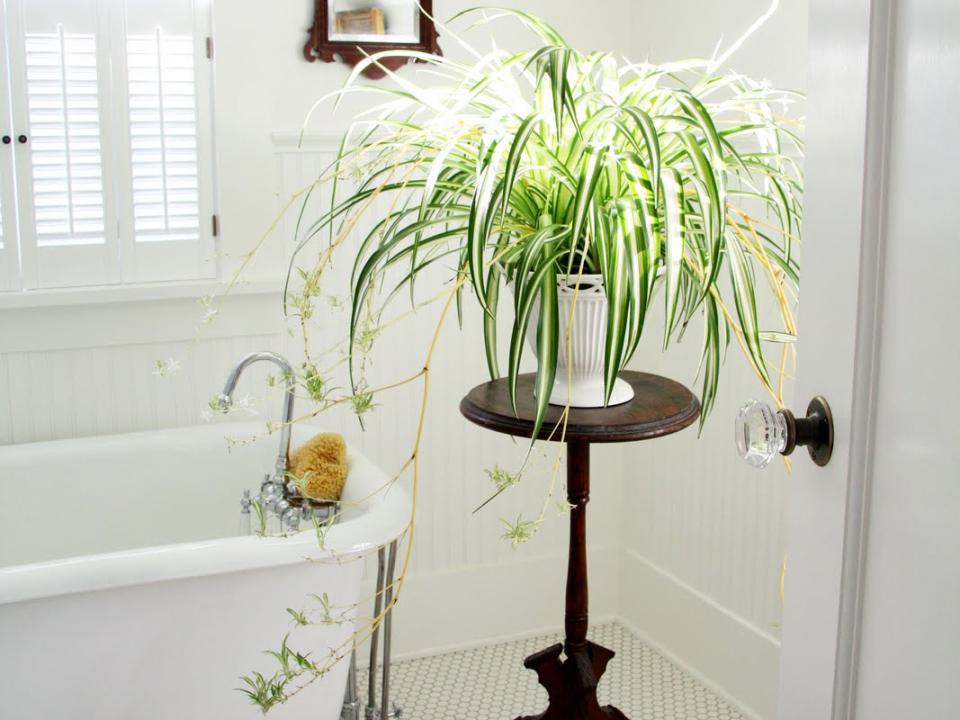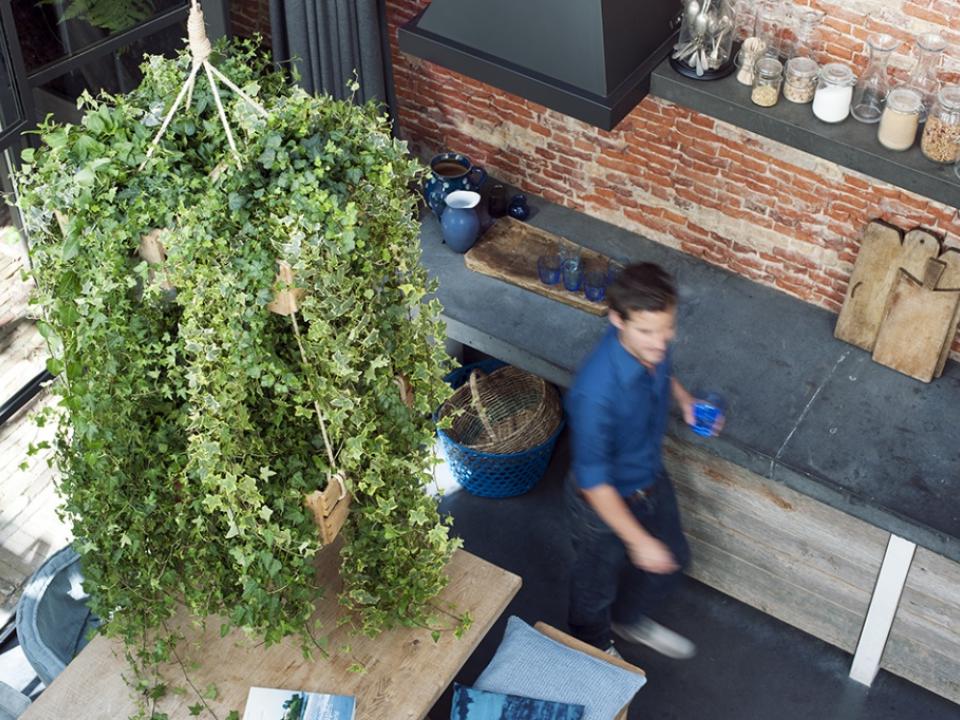English ivy
This quintessentially English climber – often seen adorning the walls of country homes – also makes a great houseplant. For best results, treat it as a trailing plant by keeping it on a shelf or table and enjoy its beautiful cascading foliage.
The ivy craves cool, moist air and evenly moist soil, so water regularly and mist the leaves. Place in bright light, which will also help the leaves to keep their colour.

Devil’s ivy
Whether as a hanging plant, or trained to climb up a cane, devil’s ivy makes a lovely addition to the home, thanks to its attractive, heart-shaped leaves, variegated with yellow and white.
Easy to grow, devil’s ivy (or pothos) can tolerate bright or low-level light and doesn’t require frequent watering. The main aspect of maintenance is regular pruning to keep its vines under control.

Heart-leaf philodendron
With its deep-green, glossy, heart-shaped leaves, the foliage of the heart-leaf philodendron is pretty but also tough, making it a relatively low-maintenance plant.
Able to withstand low light, the philodendron should be watered about once a week during the growing season and only sparingly in winter.
Creeping fig
Although more commonly grown outdoors as a climbing vine, the creeping fig can also be grown successfully inside the home. The pretty, heart-shaped leaves look great cascading from a shelf, or can be trained to grow up a trellis structure.
To keep your fig plant happy, avoid direct, bright sunlight. Give it a thorough watering in summer, until it seeps through the bottom of the pot – and ensure the water is always moist to the touch. But remove any excess water from the drip tray to avoid root rot. In winter, it can be watered less frequently.
 Spider plant
Spider plant

If you’re looking to add a little bit of movement to a sparse corner of your home, look no further than the trusty spider plant. Bursting from its pot like an explosive firework, it’s nothing if not eye-catching. This lively plant is virtually indestructible, and even sprouts its own ‘plantlets’ on the tips of its leaves, which can be replanted as new plants.
Ensure your spider plant flourishes by placing it in well-drained soil and bright, indirect sunlight.





